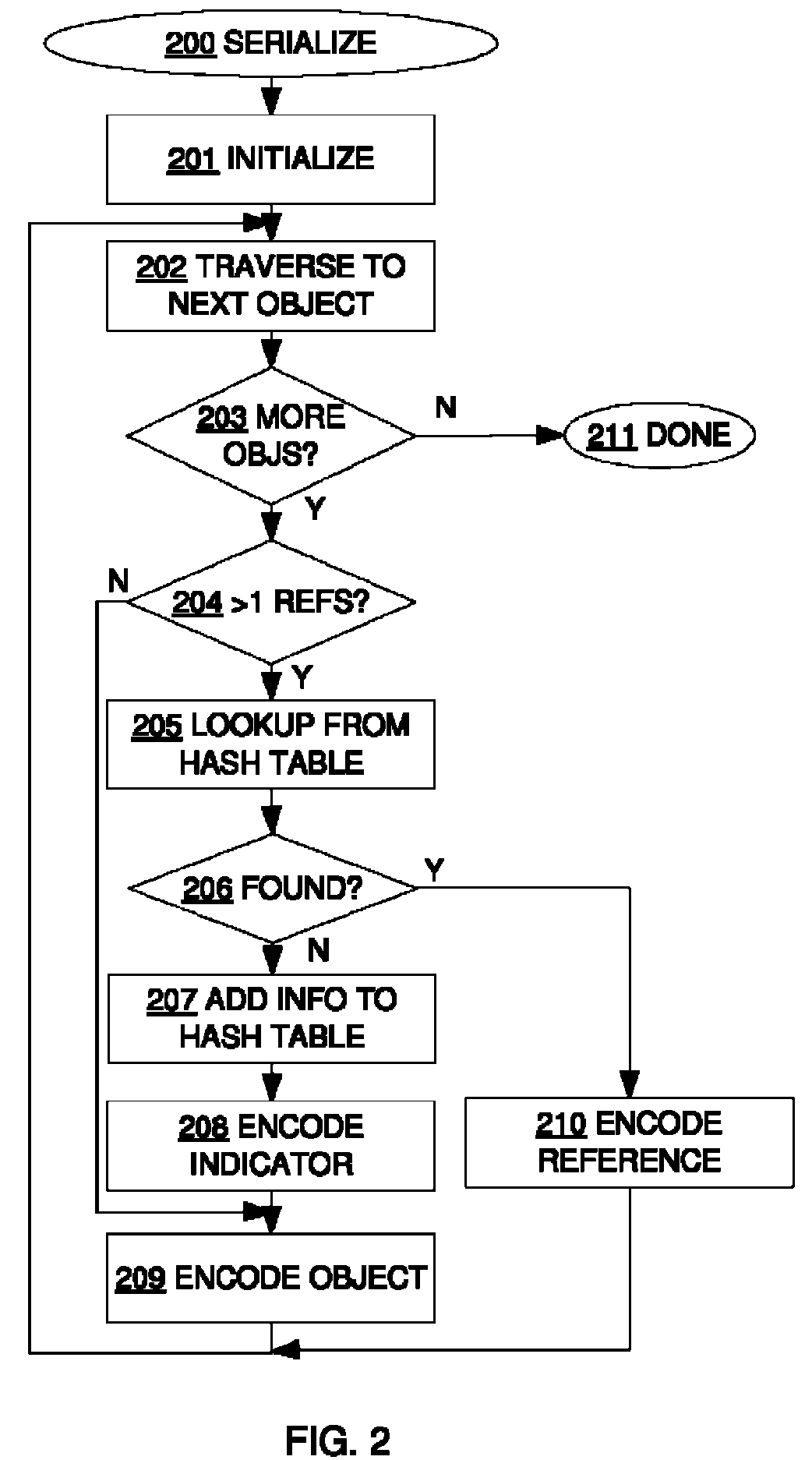Serialization of shared and cyclic data structures using compressed object encodings
a data structure and object encoding technology, applied in the field of software technology, can solve the problems of limited memory bandwidth of superscalar processors, and achieve the effect of improving the serialization of data structures and fast coding techniques
- Summary
- Abstract
- Description
- Claims
- Application Information
AI Technical Summary
Benefits of technology
Problems solved by technology
Method used
Image
Examples
Embodiment Construction
[0031]The invention can be seen as a method of converting between two data representations, a first data structure comprising objects and a second data structure comprising packets. The first data structure is typically in a format normally manipulated by an application program. The data objects contained in it can generally be of any types supported by the application program, including structures, class instances, strings, arrays, integers, floating point values, list nodes, etc. The first data structure is typically stored in the main memory of a computer. It is normally application data that controls (together with the program code) how the application operates. The conversion method would typically be called by the application, though it could also be called by the operating environment, e.g. to implement persistence for an application.
[0032]The second data structure is the encoded data stream that contains a compact encoded representation of the first data structure. The conve...
PUM
 Login to View More
Login to View More Abstract
Description
Claims
Application Information
 Login to View More
Login to View More - R&D
- Intellectual Property
- Life Sciences
- Materials
- Tech Scout
- Unparalleled Data Quality
- Higher Quality Content
- 60% Fewer Hallucinations
Browse by: Latest US Patents, China's latest patents, Technical Efficacy Thesaurus, Application Domain, Technology Topic, Popular Technical Reports.
© 2025 PatSnap. All rights reserved.Legal|Privacy policy|Modern Slavery Act Transparency Statement|Sitemap|About US| Contact US: help@patsnap.com



